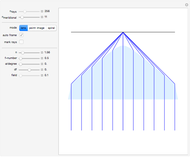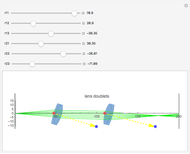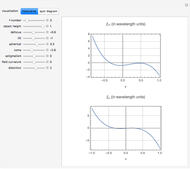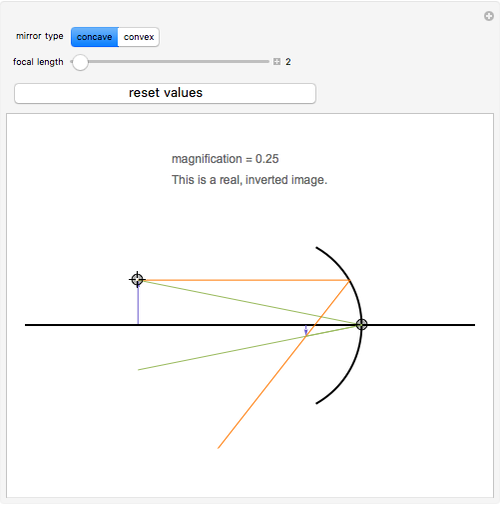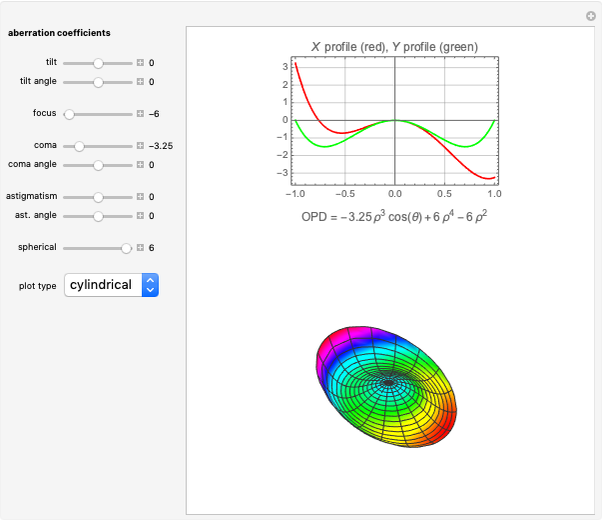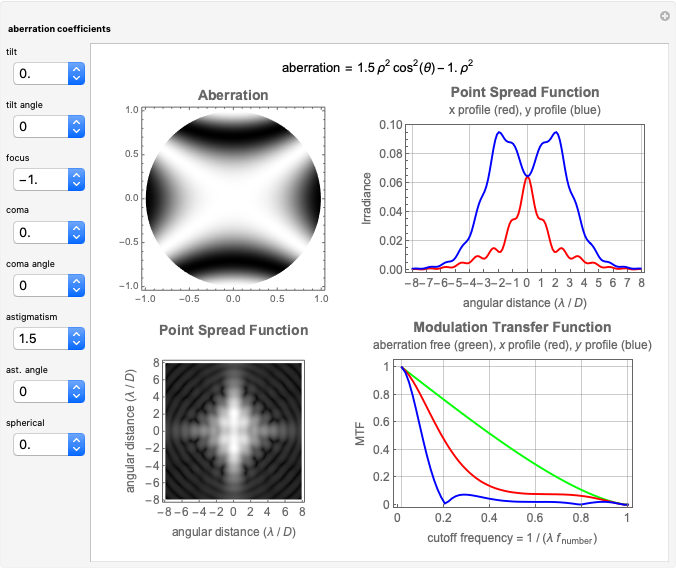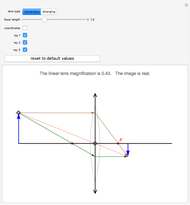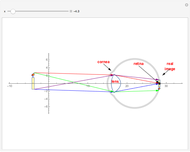Spherical Lens Aberration

Requires a Wolfram Notebook System
Interact on desktop, mobile and cloud with the free Wolfram Player or other Wolfram Language products.
This Demonstration studies the refraction of a light beam passing through a spherical lens. Drag the black rectangle in the top graphic to show the focal region magnified in the lower graphic. With high magnification, you can see that the beams do not converge exactly to a point (the lens focus) because of spherical aberration. Likewise, you can observe chromatic aberration by adding additional colors to the light beam. You can vary the input light beam and control the rectangular zoom region and the scaling. You can always return to the initial settings using the reset button.
Contributed by: Aleksandr Dombrovskiy (April 2015)
Open content licensed under CC BY-NC-SA
Snapshots
Details
Aberration occurs in spherical lenses and mirrors because spherical optical elements converge a parallel light beam not to a point but to a focal plane. Spherical aberration is the most important and, in most cases, the only significant defect for optical systems, including the eye [1]. The distorting effect of spherical aberration can be diminished by decreasing the diameter of the entrance pupil (or the diameter of the input beam) or by increasing the focal distance. However, perfect optical correction is practically impossible.
Another type of aberration that degrades the quality of an image is chromatic aberration. This occurs for white light (or wide-spectrum light) as a result of dependence of the refractive index on the wavelength (dispersion); the light beams for different colors converge to different points.
This Demonstration shows the dependence of spherical and chromatic aberration for a spherical lens on the characteristics of an incident light beam and the refractive lens.
Snapshot 1: refraction by a thick lens; aberrations are obvious even without zooming
Snapshot 2: refraction by a thin lens; aberrations are considerably less noticeable and can be seen only by zooming
Snapshot 3: showing chromatic aberration
Snapshot 4: divergence of the rays of light of different colors as a result of chromatic aberration
Reference
[1]. M. Moshirfar, "Spherical Aberration in Intraocular Lenses," Journal of Ophthalmic & Vision Research, 5(4), 2010 pp. 215–216. journals.sbmu.ac.ir/jovr/index.php/jovr/article/view/246/266.
Permanent Citation
"Spherical Lens Aberration"
http://demonstrations.wolfram.com/SphericalLensAberration/
Wolfram Demonstrations Project
Published: April 17 2015






